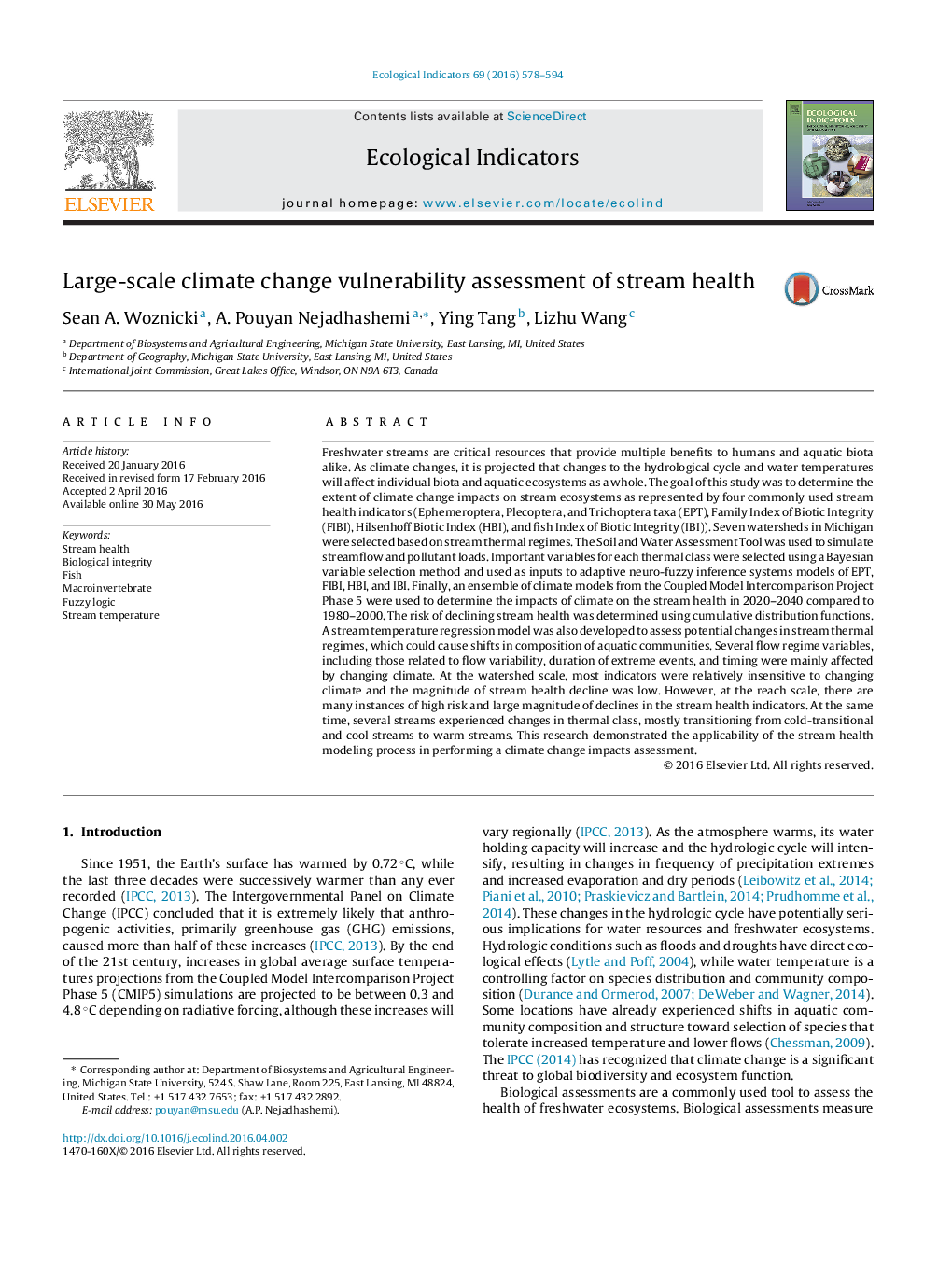| کد مقاله | کد نشریه | سال انتشار | مقاله انگلیسی | نسخه تمام متن |
|---|---|---|---|---|
| 6293299 | 1617133 | 2016 | 17 صفحه PDF | دانلود رایگان |
عنوان انگلیسی مقاله ISI
Large-scale climate change vulnerability assessment of stream health
ترجمه فارسی عنوان
ارزیابی آسیب پذیری در مورد تغییرات اقلیمی در مقیاس بزرگ سلامت جریان
دانلود مقاله + سفارش ترجمه
دانلود مقاله ISI انگلیسی
رایگان برای ایرانیان
کلمات کلیدی
موضوعات مرتبط
علوم زیستی و بیوفناوری
علوم کشاورزی و بیولوژیک
بوم شناسی، تکامل، رفتار و سامانه شناسی
چکیده انگلیسی
Freshwater streams are critical resources that provide multiple benefits to humans and aquatic biota alike. As climate changes, it is projected that changes to the hydrological cycle and water temperatures will affect individual biota and aquatic ecosystems as a whole. The goal of this study was to determine the extent of climate change impacts on stream ecosystems as represented by four commonly used stream health indicators (Ephemeroptera, Plecoptera, and Trichoptera taxa (EPT), Family Index of Biotic Integrity (FIBI), Hilsenhoff Biotic Index (HBI), and fish Index of Biotic Integrity (IBI)). Seven watersheds in Michigan were selected based on stream thermal regimes. The Soil and Water Assessment Tool was used to simulate streamflow and pollutant loads. Important variables for each thermal class were selected using a Bayesian variable selection method and used as inputs to adaptive neuro-fuzzy inference systems models of EPT, FIBI, HBI, and IBI. Finally, an ensemble of climate models from the Coupled Model Intercomparison Project Phase 5 were used to determine the impacts of climate on the stream health in 2020-2040 compared to 1980-2000. The risk of declining stream health was determined using cumulative distribution functions. A stream temperature regression model was also developed to assess potential changes in stream thermal regimes, which could cause shifts in composition of aquatic communities. Several flow regime variables, including those related to flow variability, duration of extreme events, and timing were mainly affected by changing climate. At the watershed scale, most indicators were relatively insensitive to changing climate and the magnitude of stream health decline was low. However, at the reach scale, there are many instances of high risk and large magnitude of declines in the stream health indicators. At the same time, several streams experienced changes in thermal class, mostly transitioning from cold-transitional and cool streams to warm streams. This research demonstrated the applicability of the stream health modeling process in performing a climate change impacts assessment.
ناشر
Database: Elsevier - ScienceDirect (ساینس دایرکت)
Journal: Ecological Indicators - Volume 69, October 2016, Pages 578-594
Journal: Ecological Indicators - Volume 69, October 2016, Pages 578-594
نویسندگان
Sean A. Woznicki, A. Pouyan Nejadhashemi, Ying Tang, Lizhu Wang,
